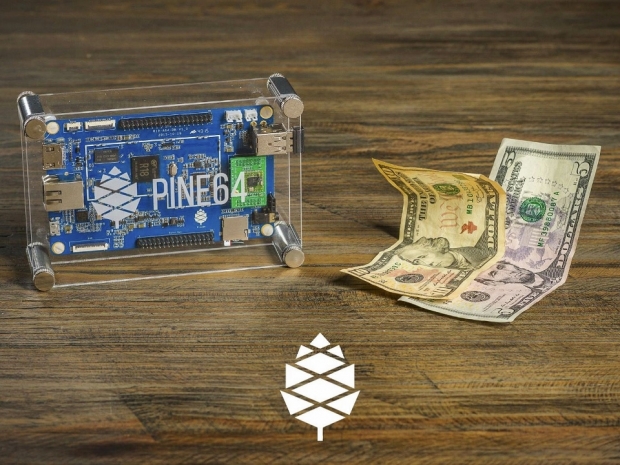Starting Saturday, a new Kickstarter company called Pine64, Inc. will begin funding the world’s first 64-bit miniature computer with a $15 base price.
Finally, a cost effective 64-bit single board computer
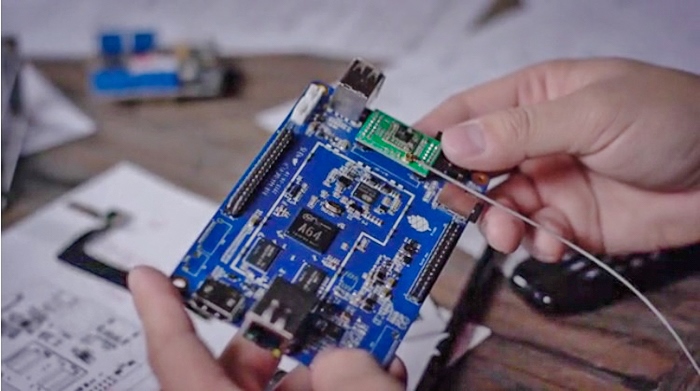
The Pine A64 has a quad-core ARM A53 64-bit CPU that runs at 1.20GHz and a dual-core MALI-400 MP2 GPU that runs at 500MHz. This is capable of 1.1 gigapixels of throughput, or slightly higher than first-generation Xbox performance. The device also includes anywhere between 512MB to 2GB of DDR3 memory and up to 256GB of expandable flash storage. With the provided HDMI 1.4 output, the device can run 4K Ultra HD 3840x2160p resolution at 30Hz or 1080p at 60Hz. In comparison to its 32-bit open source counterparts, the entire system delivers up to 20 to 30 percent higher performance and consumes anywhere between 2.5 to 3.5 watts. Of course, this is all powered through MicroUSB 5V charger or a 3.7V battery through on-board power management.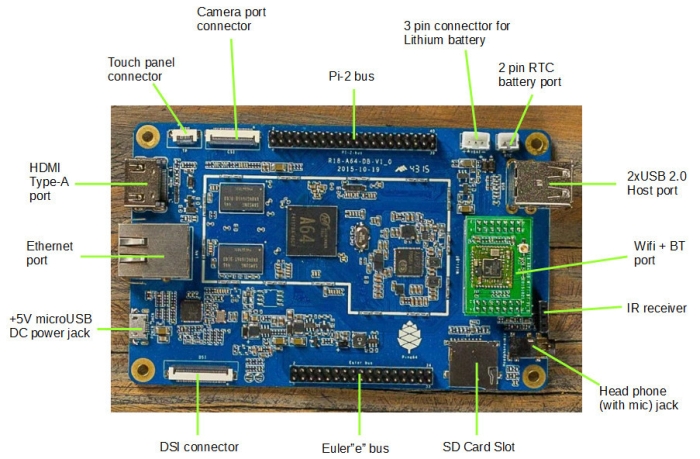
Pine A64 is an open source platform and can be paired with Android, Ubuntu Linux, OpenWrt, XBMC and openHAB IoT. Yet perhaps the best part of this device is the company’s claim on its FAQ page that it is currently working on support for the Windows operating system.
Source: Kickstarter.com (Pine 64)
Pricing - $15 and up, depending on configuration
For $15 dollars, the default Pine A64 kit ships with 512MB of RAM, two USB ports, 4K 3840x2160p HDMI 1.4 output (30Hz), 3.5mm audio/mic output, a 10/100Mbps Ethernet port, and two I/O expansion buses. At $19 dollars, the more advanced Pine A64+ model features 1GB of RAM (with a 2GB option for $10 more), a 1000Mbps Gigabit Ethernet port and three additional ports to add optional accessories such as a camera module, touch panel module, and the LCD Panel port.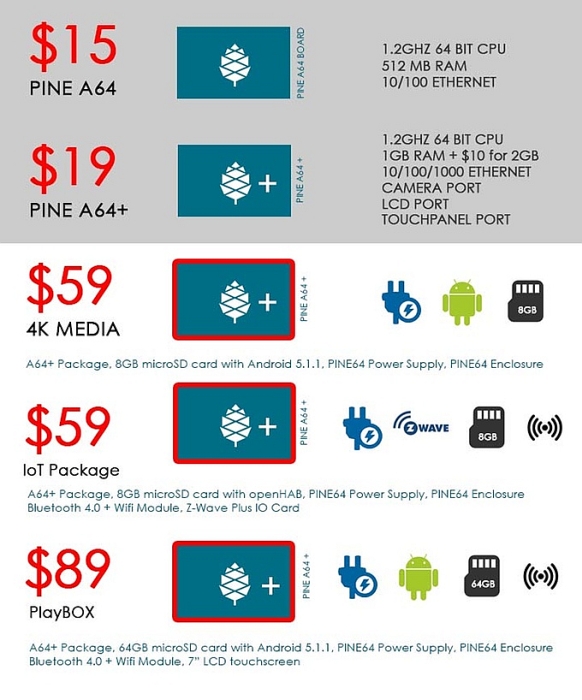
Source: Kickstarter (Pine A64)
For $59, you can get the Pine A64 “4K Media” kit, which includes the A64+ package, an 8GB microSD card with Android 5.1.1, a power supply and a Pine A64 enclosure. At the same price, there is an “IoT” kit which includes the A64+ package, an 8GB microSD card with openHAB, a power supply, a Pine A64 enclosure, a Bluetooth 4.0 + WiFi module and a Z-Wave Plus I/O card.
Finally, at the highest tier of $89 is the “PlayBox” kit which includes the A64+ package, a 64GB microSD card with Android 5.1.1, a power supply, a Pine A64 enclosure, a Bluetooth 4.0 + WiFi module and a 7-inch color active matrix 1024x600 LCD panel with 24-chip LED backlight.
SoC vs Single Board Computer
Many people often get confused on the difference between a Silicon-on-Chip (SoC) unit and single board computer (SBC). In short, an SoC is a chip, whereas a single board computer is a printed circuit board (PCB). A useful analogy would be like having a car (SBC) versus having just an engine (SoC). A standalone engine cannot run by itself but needs to be placed in a car with a few extra components and connectors. A useful explanation of the differences can be found here.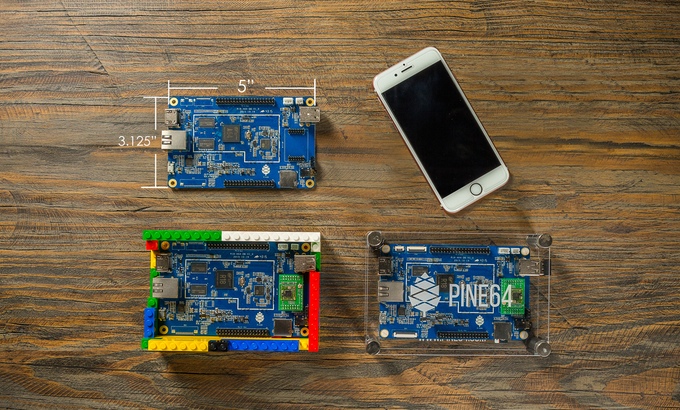
Size comparison: Pine A64 single board computer (SBC) and Apple iPhone 6
Some of the most popular single board computers around today are developed by the Raspberry Pi Foundation, a Wales, United Kingdom-based charity founded in 2009 to promote the study of basic computer science in schools. The organization currently offers three models – the Raspberry Pi, the Raspberry Pi 2, and the Raspberry Pi Zero – but they are only using 32-bit chips and only support a maximum resolution of 1920x1200p at 60Hz.
The first Raspberry Pi was launched in February 2012 at a $25 introductory price with a 700MHz single-core ARM1176 32-bit CPU, a Broadcom VideoCore IV GPU (1080p) and up to 512MB of RAM. The second-generation Raspberry Pi 2 was launched in February 2015 at a $35 introductory price and features a 900MHz quad-core Cortex A7 32-bit CPU, a Broadcom VideoCore IV GPU and up to 1GB of RAM. A significantly cheaper, half-size model, the Rasperry Pi Zero, was launched in November 2015 at a $5 introductory price with a 1GHz single-core ARM1176 32-bit CPU and 512MB of RAM.
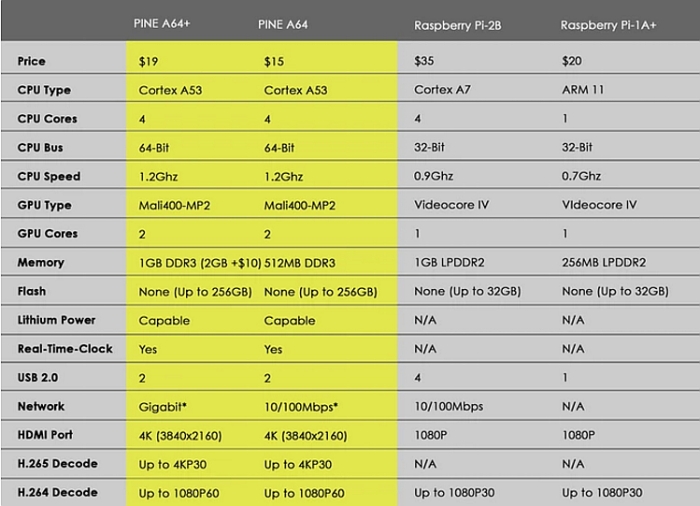
Pine A64 versus Raspberry Pi 1 and 2
Back in May 2015, Oakland-based startup Next Thing Co. crowdfunded its own Linux dev board marketed as a single board computer. The “C.H.I.P.” device has a single-core Cortex A8 1GHz 32-bit CPU and a MALI-400 MP1 GPU at 500MHz and 0.5 gigapixels per second. The device starts at $9 and goes up to $24 after adding an HDMI port.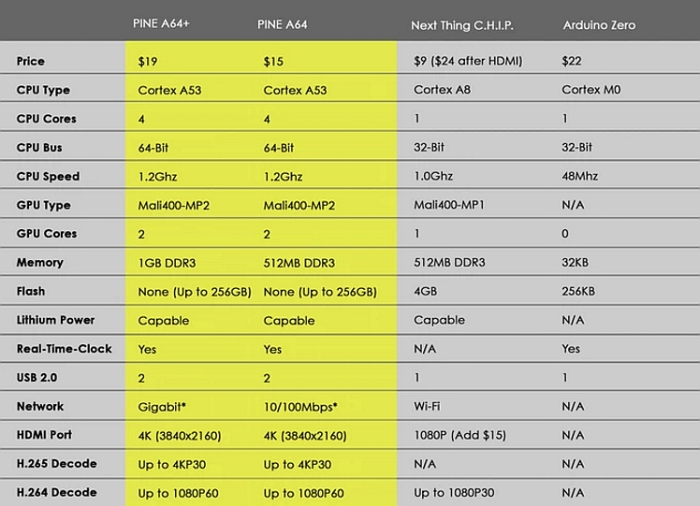
Pine A64 versus Next Thing C.H.I.P. and Arduino Zero
The team of designers, engineers and entrepreneurs behind the device insist “the Pine A64 board will always be $15 and with your support, our manufacturing partners can produce the quantities we need and hopefully even bring the price down.”
The project currently has over 34,250 backers with over $1.6 million pledged and will be funded on Saturday, January 23rd at 3:44am Pacific Standard Time. Estimated delivery for new backers is March, April, or May 2016, depending on configuration.
We have personally backed the company's project ourselves with the Pine A64+ unit (2GB of RAM) and look forward to the multitude of usage options it provides, from a simple media center box, to a small desktop companion tablet, to even a very powerful 4K-ready car stereo console.

